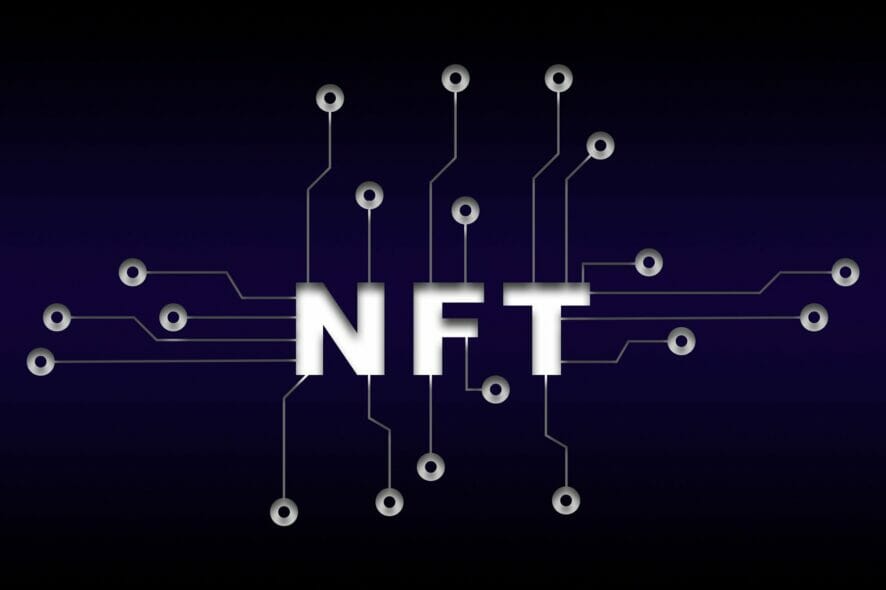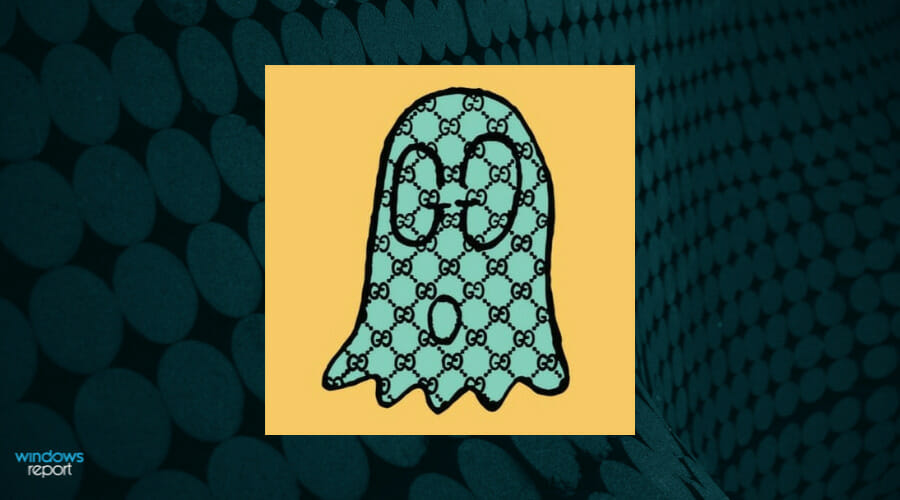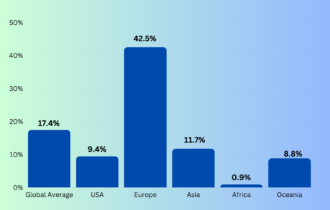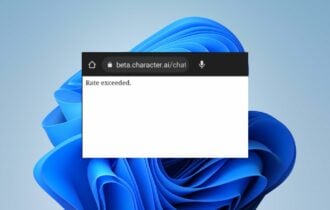NFT vs screenshot: All about having the certificate of ownership
5 min. read
Updated on
Read our disclosure page to find out how can you help Windows Report sustain the editorial team Read more
Key notes
- NFTs have taken the world by storm in the last few years, with the costliest one fetching around $69 million. This gives rise to another trending topic, NFT vs screenshot.
- Many believe that when you can just copy, download or screenshot an NFT, what's actually the point in buying it.
- Also, find out if you can create NFT and sell it on the web.

NFT, or Non-Fungible Token, is a form of digital art that can be sold and purchased on a dedicated platform. But, what if you click a screenshot of an NFT? You are most likely wondering if it is as valuable as the original. Let’s find all about NFT vs screenshot in this article.
Note that NFTs can be anything digital, be it artwork, an image, a video, or even an article. People usually trade these using cryptocurrency, though that’s not always the case. There are various websites that sell NFTs, OpenSea being one of the most popular.
So let’s delve into the concept and understand the whole NFT vs screenshot debate, along with how sustainable the whole idea of NFT is.
What is the difference between a fungible and non-fungible token?
When you say something is fungible, it basically means that it can be traded for another similar item. For instance, a $10 bill can be traded for another $10 bill, or a bitcoin can be traded for another since both these items have the exact same value.
In blockchain technology, cryptocurrencies are the prime example of fungible items. For non-tech readers, stocks, are a good example.
On the other hand, non-fungible tokens are those that cannot be exchanged since each have their own intrinsic value. The NFTs fall under this category. Even a baseball card or anything that’s collectible doesn’t have an identical item to be exchanged with.
But, being non-fungible in no way indicates that these cannot be sold or resold. All it means is that these are unique and there’s nothing like them out there.
Also, there can be copies of NFTs. If there are just 10 copies, it could be a rare one and fetch a good price, while those with thousand or so copies certainly won’t be as valuable. These copies that we are referring to have nothing to do with the NFT vs screenshot thing.
What is the craze around NFTs?
By now, you already know that an NFT carries a certain value since it’s unique or one of a kind. But, anyone could copy the image or video. What actually makes it unique and valuable is the proof of ownership.
Anyone who buys an NFT gets a certificate of ownership that can be stored in a digital wallet. Along with that, the exchange is recorded on the blockchain. Though make sure that your wallet supports NFTs before going ahead with the purchase.
Many believe that NFTs are a great way of purchasing digital art. Many do it to support young talents, some as a hobby, while others take it as an investment.
For instance, an NFT that goes by the name Gucci Ghost was initially listed at $200 and after passing through several owners, it was last purchased at $3600 and is currently available for $16300.

The costliest NFT to be sold to date remains at $69.3 million, created by an artist who goes by the name Beeple. It’s a collection or collage of no less than 5000 digital images, one created each day from 2007 to 2021.
Apart from that, buyers also put these NFTs on their social media, usually as avatars.
You should now have a fair understanding of how the whole NFT thing works, and the craze for it amongst people. Let’s now walk you through the main topic, NFT vs screenshot, and if the latter is as valuable as the former?
Is a screenshot as valuable as the NFT?
Honestly, it’s not really difficult to screenshot an NFT or make a copy of it. In just a few clicks, you can have the costliest ones on your computer, upload it wherever you feel like, and flex amongst your peers.
But, here’s the catch! While you have the screenshot or a copy of the digital art, you don’t have the certificate of ownership. And, that is what matters.
You can’t really sell a screenshot since any buyer would demand the ownership proof as well. Also, how an NFT has been traded in the past can be checked on multiple websites. So anyone can easily distinguish a screenshot from the original NFT.

Think of it this way, while you can click a picture or take a screenshot of any famous painting, it wouldn’t fetch you a penny in the market. It’s simply a copy of the original, and many such exist. Similarly, a screenshot of the NFT is not of any value.
That should put an end to the NFT vs screenshot debate and help clear the air around the subject.
Can I create my own NFT?
Yes, you can! Anyone can create an NFT, list it on any of the specialized platforms, and sell it. But there’s a fee involved here, also referred to as gas.
Every interaction on a blockchain has to be verified and it’s done by some high-powered systems which cost you a small fee. Be it minting the NFT, purchasing, or selling it on the blockchain, each of these will require you to pay a certain fee, which is variable.
Besides, there’s no guarantee that your NFT would actually be purchased, and you might end up just spending without any returns. So, make sure you do thorough research before you get into creating, selling, or buying NFTs.
However, there are some platforms that allow you to create as well as list an NFT for free, and only charge you when it’s sold. Do check out those as well.
That’s all there is to NFT vs screenshot, and now you know why the latter has almost no value when compared with the former.
Also, if you are into cryptocurrency, check out the best security software for safer crypto-trading.
Tell us your views on the NFT vs screenshot discussion in the comments section below.








